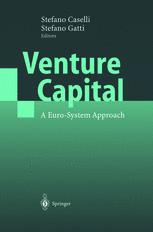

Most ebook files are in PDF format, so you can easily read them using various software such as Foxit Reader or directly on the Google Chrome browser.
Some ebook files are released by publishers in other formats such as .awz, .mobi, .epub, .fb2, etc. You may need to install specific software to read these formats on mobile/PC, such as Calibre.
Please read the tutorial at this link: https://ebookbell.com/faq
We offer FREE conversion to the popular formats you request; however, this may take some time. Therefore, right after payment, please email us, and we will try to provide the service as quickly as possible.
For some exceptional file formats or broken links (if any), please refrain from opening any disputes. Instead, email us first, and we will try to assist within a maximum of 6 hours.
EbookBell Team

4.1
90 reviewsJosh Lerner Jacob H. Schiff Professor of Investment Banking Harvard Business School and National Bureau of Economic Research During much of the 1970s and 1980s, venture capital and private equity remained largely a United States phenomena. Over the past decade, how ever, private equity has spread around the globe, taking particularly firm root in Western Europe-indeed, growing 4,700% since 1984 through 200 I. Today, Europe is the dominant private equity market outside the United States. Despite this tremendous growth and the current recessionary cli mate, there is ample room for attractive expansion in European private eq uity; both for venture capital and private equity. There have been several reasons for this growth. The first has been the internationalization of capital sources. The key sources of capital for Euro pean private equity funds have traditionally been segmented by national boundaries: historically, the pattern in Europe has been for private equity groups to raise funds from banks, insurance companies, and government bodies in their own country, with little involvement from foreign investors. These barriers are now breaking down for two principal reasons. First, in stitutional investors, particularly in the United States, have become in creasingly interested in European funds. Second, many international pri vate equity firms have become more active in Europe. A second driver of growth has been the entry of new talent into the in dustry. Traditionally, many European private equity investors had come from financial or consulting backgrounds, rather than from operating roles.